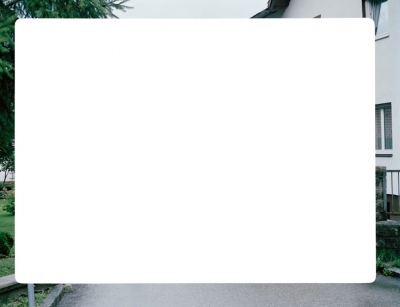-


David Komary
Zement. Notes on the omissions in the photographs of Tatiana Lecomte.
In the series of photographs Zement (Cement) Tatiana Lecomte reflects on the boundaries of visibility. Put more precisely, she considers the boundaries of the photographic image by staging an aesthetic specific to absence. In this context the individual depictions are dominated by omissions, gaps in the image.
On the background to the series: The artist looks for the sites of former concentration camps to question the locations in photographic terms, i.e. looking for visual, indexical or narrative traces of the past. The series shows sites at Ebensee, which bore the military and political codename Zement during the war and was 'overwritten' with a housing estate following the war. The setting in this context looks like a palimpsest of staged forgetting.
Lecomte encounters this absence of historical traces in her photographs with an invisibility of the second order: During the process of exposing the print she covers a large part of the photographic paper with card to mask parts of the projection. The omitted areas of the image remain unexposed per se, i.e. iconically empty. The iconoclastic intervention effectively throws the viewer's explorative gaze back onto itself. In a situation of pictorial indeterminacy, the fragments of imagery on the edges of the photograph function as potential semantic associations. The image becomes an active arena for the gaze, the empty rectangular format of the image advances to become a foil with an imaginary charge, the activator of images stored in the collective memory.
At this point the confrontation with Lecomte's work becomes a temporal ontological reconstruction, a deconstruction. The authentic depiction is no longer interesting — photography as contemporary documentation or as an emanation of the past — instead it is more the discursive system that regulates and controls levels of visibility. Ultimately, Lecomte analyses the codification and the logics behind the location's representation instead of the setting itself, i.e. the way the location has been and is inscribed. As a visual dispositif and a media-specific system photography always contributes, in social, political and economic terms, to the constitution and creating of hierarchy in spaces. In this analysis of the image, the image forms, as W.J.T Mitchell points out, a complex interplay of visuality, apparatus, institution, discourse, physical bodies and the figurative.
Translation: Jonathan Quinn